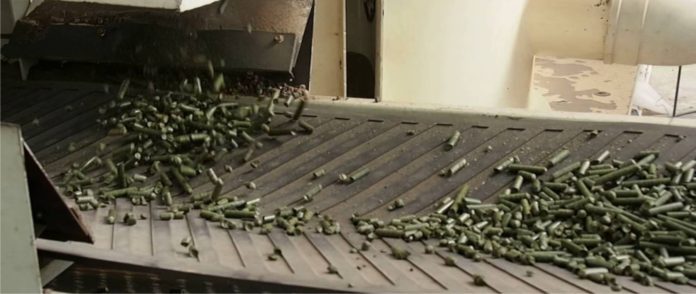

The mission of every feed mill should be achieving and maintaining those indicators. This article focuses on the factors influencing both Feed quality and Feed mill productivity.Before discussing the topic of Pelleting tips, a good understanding of the feed milling process is important. Feed formulation is the key planning action of feed milling process. Nutritionists around the globe constantly striving to achieve optimum nutrition with minimum cost by using modern tools and 

The first step of feed milling is blending of various raw materials as per the recipe. The grinding process is necessary since some of the raw materials are of bigger particle size. The outcome of the first process is mash or meal form of feed. The purpose of second process of feed milling is to soften the mash or meal feed through heat and moisture. The output of this process is conditioned mash feed. Third process compresses the softened mash feed and form a dense mass, which is at higher temperature from ambient temperature. It is also called hot pellets. The final process in feed milling with draws the heat and moisture from the dense mass and forms shaped mass. This is called the finished pellet feed.
The following series of points focus on preparatory processes before pelleting process itself
- Batching or proportioning
- Grinding or particle size reduction
- Mixing of ration
- Conditioning of ingredients
- Cooling of compound feed
Batching or proportioning
The feed plants are globally designed in two ways
pre-grinding
post grinding
In pre-grinding process flow, the grinding is done before the batching process. In this design big particles in formulation like maize and other grains only passed through Hammer mill. Theoretically, there should be less specific energy (kW/T) in Hammer mill. This should be validated in each feed mill. In post-grinding design, the grinding is done after batching. In most of the cases, all raw materials are passed through Hammer mill. Either way, the plant is designed, the accuracy and repeatability of batching system is the key to achieve optimum nutrition designed by the nutritionist. The modern batching system is a weighing system consists of load cells and signal processing unit controlled by a Programmable Logic Controller (PLC). Basically it is a Measurement System like Verniercalliper, NIR etc.Hence the system should be checked and corrected periodically. It is highly recommended to use Statistical tool to monitor the batching system performance.
Challenges in Batching
Variation or error in batching system leads to deviation of nutritional values of finished feed from formulated values. This leads to either nutrient concentration or dilution. Improper nutritional concentration causes direct financial loss to the organization. The nutritional dilution may cause poor animal performance and, in a way, financial loss to the farmer.


1. Calibration Periodical calibration of all batching, weighing and metering systems of the feed mill minimizes the variations in measuring system. Most importantly, the calibration should be carried out to the Maximum Scale Reading (MSR) or till the measuring range of the design. The data should be recorded in Calibration register. The variation between set quantity and actual quantity should be studied batch on batch and plot it in a Run chart. It helps to identify the abnormal variations#and presents the true random variation##
2. Malfunctioning of slide gate of bins Leakage at slide gates is a common problem and unnoticed in many feed mills.Slide gate operating conditions should be monitored periodically. Because leakage at dosing gate of raw material bins and slide gates of batching bin (bin on load cells) creates error in batching process. The air pressure of pneumatic line and wear and tear in slide gates should be checked periodically and take corrective action if necessary.
3. In-flight quantity
This is another very important factor in batching process. In-flight quantity is the amount of raw material in suspension after stopping dosing screws, before it reaches the batching bin. This amount depends on design of dosing screw pitch. The screw pitch is designed based on the bulk density of raw material. The equipment supplier designed the dosing screw pitch based on assignment of certain raw material in certain bins. In operation, interchanging of bins to be avoided because it will create variations in batching.
Note:
# – Abnormal variations – which is from external sources and indicates that the process is out of statistical control
##- True random variation – which is intrinsic to the process and will always be present.
This is the part-I of the column contributed by M Kanagaraj who is an expert on feed milling, for any further details he can be reached atgmkraj70@gmail.com.
by M Kanagaraj, Catalyst Techvisor Private Limited













